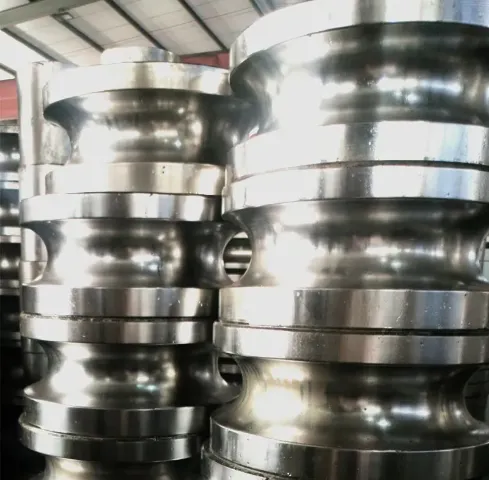Compression Molding Machine: A powerful tool for shaping polymer materials
Compression molding, as a long established and widely used polymer material molding process, still plays an important role in multiple fields today. As a key equipment for implementing this process, the development and improvement of Compression Molding Machine directly affect production efficiency, product quality, and cost-effectiveness. This article will provide a brief overview of the principle, structure, application, and development trends of Compression Molding Machine.

The core principle of Compression Molding Machine
The core principle of compression molding press is to use thermosetting or thermoplastic plastics to fill the mold cavity under heating and pressure conditions, and after a period of curing or cooling, finally obtain the desired shape of the product. Its basic structure usually includes several main parts such as the body, hydraulic system, control system, heating system, and mold. The body is the skeleton of the entire machine, which bears the pressure during the molding process; The hydraulic system provides power to control the opening and closing of the mold and the forming pressure; The control system is responsible for accurately controlling parameters such as temperature, pressure, and time to ensure the stability of the molding process; The heating system is used to heat the mold and bring the plastic to a suitable flow state; The mold is the key component that determines the shape of the product.
Compared with other polymer material molding processes such as injection molding and extrusion molding, compression molding has unique advantages
For example, due to the absence of injection mechanisms, the structure of compression molding rubber is relatively simple and maintenance costs are low. In addition, compression molding can manufacture large-sized products and effectively avoid the problem of internal stress concentration, thereby improving their mechanical properties. Therefore, compression molding is widely used in the fields of automobiles, electrical appliances, building materials, etc., such as manufacturing automotive interior parts, electrical casings, phenolic resin products, etc.
Compression Molding Machine also has some limitations in forming
For example, the molding cycle is relatively long, making it difficult to achieve automated production. For products with complex shapes, the molding difficulty is high. Therefore, with the advancement of technology and changes in market demand, compression rubber molding machines are also constantly developing. On the one hand, the automation level of machines is constantly improving, such as using robots for material picking and unloading, which improves production efficiency and reduces labor costs. On the other hand, new heating technologies such as induction heating and infrared heating have been introduced into the Compression Molding Machine to improve heating efficiency and uniformity. In addition, optimizing mold design, such as using in mold cooling, in mold heating, and other technologies, can also shorten the molding cycle and improve product quality.
In summary, the compressor moulding machine, as an important equipment for polymer material molding, plays an indispensable role in modern industry. With the continuous advancement of technology and the expansion of application fields, Compression Molding Machine will develop towards a more automated, intelligent, efficient and energy-saving direction, bringing greater development space for the molding application of polymer materials.
Compression Molding Machine FAQs
What is Compression Molding Machine? What is its working principle?
Compression Molding Machine is a device used for producing rubber, plastic, or composite products, which solidifies and shapes the material in a mold through heating and pressure.
working principle:
- Place preheated materials (such as rubber or prepreg) into an open mold.
- Close the mold and apply high pressure (usually 50500 tons) to fill the cavity with material.
- Heat and hold for a certain period of time to sulfide or cure the material, and finally open the mold to remove the product.
What materials and application areas are suitable for Compression Molding Machine?
Applicable materials:
Rubber (such as silicone, EPDM)
Thermosetting plastics (such as phenolic resin, epoxy resin)
Composite materials (such as fiber-reinforced plastics)
Typical applications:
Automotive components (sealing rings, gaskets)
Electronic insulation components (sockets, switches)
Kitchenware (handle, heat-resistant parts)
What is the difference between Compression Molding Machine and Injection Molding Machine?
The main differences are as follows:
Process: Compression molding is an open feeding process followed by pressurization, while injection molding machines inject molten material into closed molds.
Materials: Compression molding often uses thermosetting materials, while injection molding machines often use thermoplastic materials.
Cost: Compression Molding Machine has a simple structure, low mold cost, and is suitable for small batches; The injection molding machine has high efficiency and is suitable for large quantities.
Product quality: Compression molded products have low internal stress, but their accuracy is usually lower than injection molding.
How to choose a suitable Compression Molding Machine?
The following parameters need to be considered:
Tonnage (pressure): Choose according to the size of the product and the hardness of the material (50100 tons for small parts and over 300 tons for large parts).
Heating methods: electric heating, oil heating, or steam heating (temperature control accuracy requirements).
Mold size: The machine workbench needs to match the length and width of the mold.
Automation level: manual (low-cost), semi-automatic (with hydraulic), or fully automatic (with robotic arm).
Common faults and maintenance points of Compression Molding Machine?
common problem:
- Product shortage or burrs - adjust pressure or mold closure accuracy.
- Uneven curing - check the heating system (such as whether the thermocouple is malfunctioning).
- Hydraulic system oil leakage - replace the sealing ring or oil filter.
Maintenance measures:
Regularly lubricate the guide rails and hydraulic components.
Clean up residual materials in the mold to prevent blockage.
Calibrate temperature and pressure sensors.
-
The World of Pipe and Tube Machinery Manufacturers: Precision and Innovationຂ່າວAug.12,2025
-
Revolutionize Your Pipe Manufacturing and Welding with Our Exceptional Machineryຂ່າວAug.12,2025
-
Navigating Pipe Machinery Costs: A Guide to Pricing for Key Equipmentຂ່າວAug.12,2025
-
Essential Pipe Fabrication Equipment: Cutting, Welding, and Support Solutionsຂ່າວAug.12,2025
-
Comprehensive Pipe Processing Machinery: From Cutting to Extrusionຂ່າວAug.12,2025
-
Advanced Pipe Fabrication Tools: Cutting, Beveling, and Welding Solutionsຂ່າວAug.12,2025


